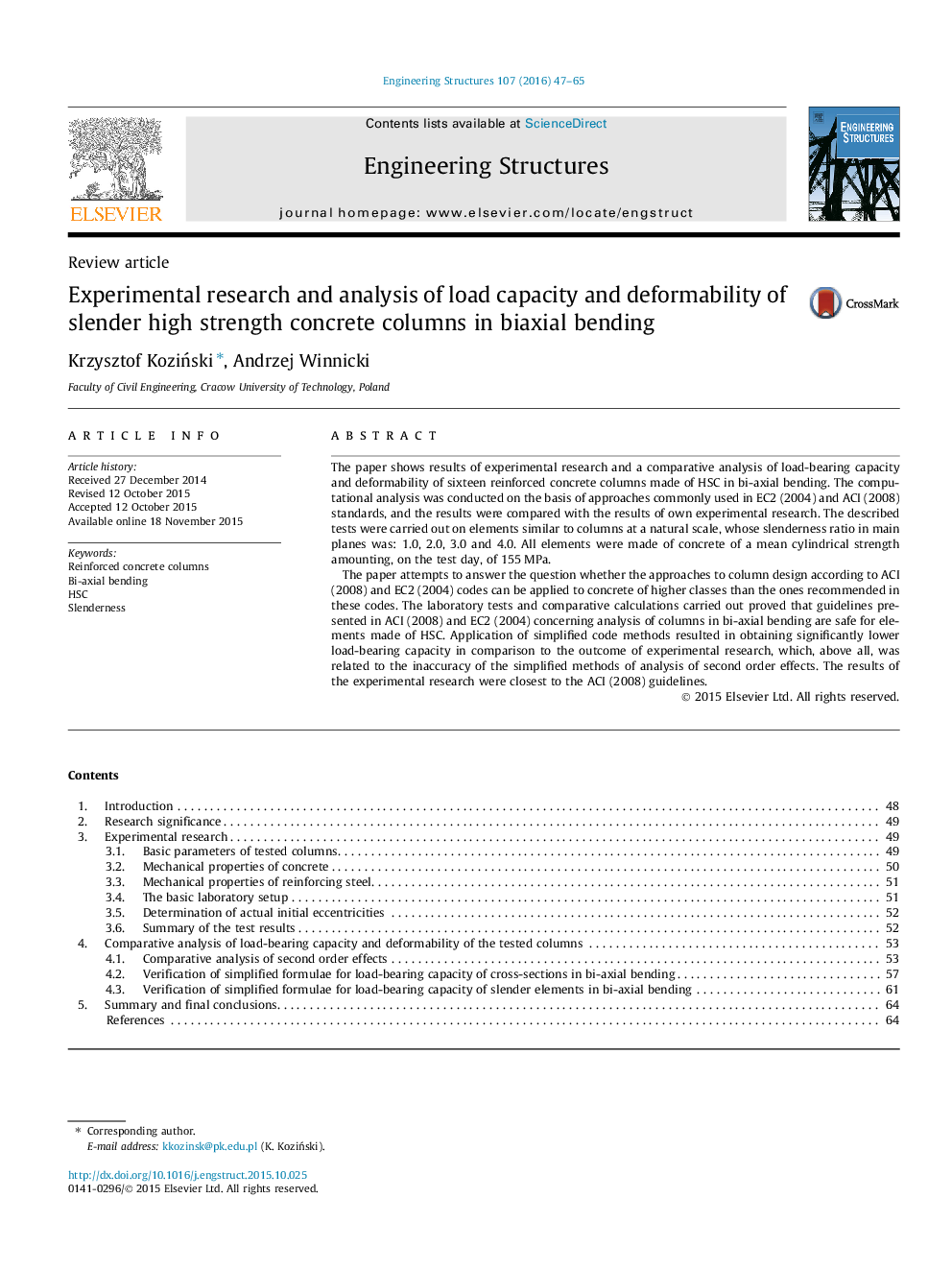| Article ID | Journal | Published Year | Pages | File Type |
|---|---|---|---|---|
| 265961 | Engineering Structures | 2016 | 19 Pages |
•Tests of sixteen columns made of HSC in bi-axial bending.•Columns made at a scale similar to the natural one.•Answer to question if code approaches can be applied to concrete of higher classes.•Computational analysis and comparison with results of experimental research.•Results of experimental research were described in the best manner by ACI [2].
The paper shows results of experimental research and a comparative analysis of load-bearing capacity and deformability of sixteen reinforced concrete columns made of HSC in bi-axial bending. The computational analysis was conducted on the basis of approaches commonly used in EC2 (2004) and ACI (2008) standards, and the results were compared with the results of own experimental research. The described tests were carried out on elements similar to columns at a natural scale, whose slenderness ratio in main planes was: 1.0, 2.0, 3.0 and 4.0. All elements were made of concrete of a mean cylindrical strength amounting, on the test day, of 155 MPa.The paper attempts to answer the question whether the approaches to column design according to ACI (2008) and EC2 (2004) codes can be applied to concrete of higher classes than the ones recommended in these codes. The laboratory tests and comparative calculations carried out proved that guidelines presented in ACI (2008) and EC2 (2004) concerning analysis of columns in bi-axial bending are safe for elements made of HSC. Application of simplified code methods resulted in obtaining significantly lower load-bearing capacity in comparison to the outcome of experimental research, which, above all, was related to the inaccuracy of the simplified methods of analysis of second order effects. The results of the experimental research were closest to the ACI (2008) guidelines.
